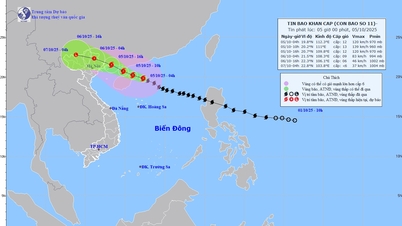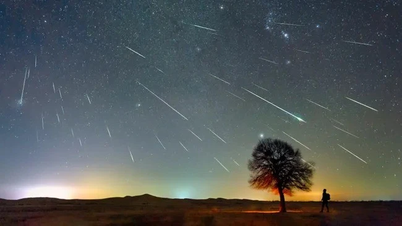On October 6, Chinese scientists announced for the first time that the dark side of the Moon - the area always facing away from Earth - has a lower temperature than the side closer to Earth.
The discovery was made based on analysis of soil samples from the dark region collected by the Chang'e 6 spacecraft and was announced on the occasion of the Mid-Autumn Festival - a traditional festival associated with moon worship in China.
Specifically, by examining the composition of characteristic minerals such as clinopyroxene and plagioclase in soil samples from the far side of the Moon, the team determined that the mantle on the far side of the Moon is cooler than the near side.
Through three thermobarometer methods, the crystallization temperature of the basalt sample collected by Chang'e-6 on the far side of the Moon was determined to be about 1,100°C, about 100°C lower than the basalt sample of the near side previously collected by Chang'e-5.
This is considered the first experimental evidence based on rock samples and geochemistry, clearly confirming the temperature difference between the far and near sides of the Moon.
The distinct difference between the two halves of the Moon, the side near and far from Earth, has long been one of the greatest mysteries in the field of lunar research.
According to Mr. Ha Thang, a researcher at the China National Nuclear Corporation (CNNC), previous studies have confirmed major differences between the two sides of the Moon in terms of terrain, elemental composition and rock characteristics.
The near side has a relatively flat, wide terrain while the far side has many deep ravines, canyons and cliffs with stronger topographic changes. In the near side, the proportion of basalt plains formed from ancient volcanic activity accounts for more than 30% of the surface area, while in the far side this proportion is only 1-2%.
In addition, the near side is richer in radioactive elements than the far side. This contrast is believed to be closely related to the formation and evolution of the Moon.
Previously, studies of the duality in the lunar geological features have relied mainly on remote sensing data, geophysical surveys, or numerical simulations.
But now, thanks to soil samples from the far side of the Moon collected by the Chang’e 6 spacecraft, scientists have the opportunity to directly access and study the differences between the two hemispheres in more depth. Through this, the research team can provide more important findings about the Earth's evolutionary history.
The research was conducted by the Beijing Institute of Uranium Geology (under the China National Nuclear Corporation - CNNC), Peking University and Shandong University.
The research results were published in the prestigious international scientific journal Nature Geoscience./.
Source: https://www.vietnamplus.vn/phat-hien-ve-su-chenh-lech-nhet-do-giua-2-ban-cau-cua-mat-trang-post1068369.vnp










































































































Comment (0)